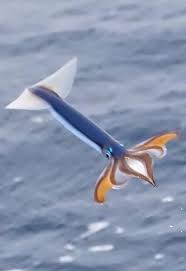An overwhelming majority of what we eat is made from plants and animals. This means that composition of our almost entire food is chemicals from the realm of organic chemistry (carbon-based large molecules). Water and salt are two prominent examples of non-organic foodstuffs - which come from the realm of inorganic chemistry. Beside some medicines is there any more non-organic foods? Can we eat rocks, salts, metals, oxides… and I just don’t know that?
Calcium carbonate, is the main ingredient in tums, and is the main component of limestone.
…That’s a salt, though, right?
If you’re counting non-NaCl salts as answers, then basically any “mineral” our body needs would probably be delivered at least partly in salt form. Just reading off some multivitamins here:
- Calcium Carbonate
- Chromium Chloride
- Cupric Sulfate
- Potassium Iodide
- Ferrous Fumarate
- Magnesium Oxide
- Manganese Sulfate
- Sodium Molybdate
- Sodium Selenate
- Zinc Oxide
(I haven’t fully checked all of these are salts— But I mean, a lot of of them are blatantly chemical analogues of stuff that definitely is salt (E.G. “Potassium Iodide” vs. “Sodium Chloride”), plus they’re metals bonded to ionic groups so they’re definitely not alloys or covalent molecules or ceramics.)
This is probably because in order for our body to absorb stuff, it basically has be water-soluble, which means salts work quite well.
When eating real food (plants, animals, and fungi), I assume a lot of this won’t be in salt form, but rather it will mostly be bound up in proteins and DNA and such. For example, iron should be primarily in hemoglobin instead of ferrous fumarate. But some of it, for example the potassium, will definitely be technically in the form of dissolved salts/minerals in the fluids inside the food.
You can of course also rearrange the compounds around. For example, this can of Windsor-brand “salt free salt substitute” I have here further lists:
- Potassium Chloride
- Calcium Silicate
- Magnesium Carbonate
You’ll note that these are some of the same components as in the list above, just a different combination. I’m pretty sure any ionic mineral that includes at least one ion that our body needs technically counts as “food”, as long as the other half isn’t poisonous— They should be basically the same when they dissolve in the water in our stomachs anyway.
Meats can also be preserved by adding nitrates and nitrites to it, though technically I guess that’s more of a likely-carcinogenic additive than part of the “food”.
Fun fact: Your body sorta knows when it’s low on minerals, and will want to start eating dirt and rocks in order to make up for it! Over 100 different types of primate do it too. So in that case, you could probably argue that plain rocks and soil literally are food, in that they provide vital nutrients the body needs and that your brain is smart enough to know that. …These days it’s apparently considered a mental disorder, but I swear it made much more sense back when the likeliest thing you were going to eat was some mud, rather than lead-contaminated radioactive refrigerants or whatever it is we’ve surrounded ourselves with.
I am not a doctor. Don’t go around eating rocks unless you’re a bird or some other type of dinosaur.
I am a geologist. I can confirm the majority of rocks are technically edible…
Oh true, the mineral salts from supplements (and broader salts of necessary metals) should count! Thanks for a long answer!
FWIW, most of our use of it comes from organic sources I believe.
But limes are organic, so shouldn’t limestone also count as organic?
Not sure if shitposting or genuine idiot. 👍
porqué no los dos?
What a fascinating question! I hadn’t previously considered this.
That our diet stems from mostly molecules described in organic chemistry can also be the direct result of the fact that there are vastly more molecules considered “organic”: about 19 million are known and the number is growing!
While for anorganic compounds, there are only about 100,000.
The separation into organic and inorganic chemistry is really only done to make it easier to talk about broader subjects in science. We need and use obviously a lot of compounds that aren’t carbon based large molecules.
Baking soda is also an inorganic compound.
deleted by creator
Can we eat rocks, salts, metals, oxides… and I just don’t know that?
You’ll die without Iron, Calcium, Potassium, Magnesium, Zinc etc. in your diet. Your body relies on a lot of metals and salts to function.
You can see an example of a food’s breakdown here to see all the metals and salts involved in foods: Nutrition data for rice (make sure you scroll to the “Detailed Nutrition Data” section and expand the categories like “Minerals”)
Fun fact, calcium supplements are Calcium Carbonate (CaCO3) - literally chalk. But for metals which are deliberately added to food, check out the Lucky Iron Fish developed to address anaemia in Cambodia.
deleted by creator
I know, right? I was blown away by the same when I learnt about it. Medical science is so young though, we haven’t really had much of an understanding about the chemistry of our bodies until this past century. God knows what ailments I’ve got that someone in 100 years will be all like “just dip this rock in your lunch, it’s that easy to cure”.
Reminds me of why they added iodine to salt .
I mean… it seemed like a good idea and all, but it didn’t help Cambodia. It’s like only a couple paragraphs down in your link. It only addresses iron-deficiency based anemia which was not the main cause of anemia in Cambodia.
Sure, but it still works for actual iron deficiencies, even if that wasn’t the anaemia cause Cambodians were dealing with.
I’m actually considering buying one for myself, I mostly eat vegetarian foods.
Cooking in a cast iron pan will give you even more iron.
True, but they’re very heavy and I can’t just throw cast iron in the dishwasher.
It depends on what you mean by “eat.” Does being able to survive them traveling through your digestive tract count as “eating” something? Does it have to have nutritional value? If the former, any inorganic substance with a low enough LD50 in a low enough dose would count. If it actually has to have nutritional value, youre limited to minerals like Calcium Carbonate (chalk and this isnt organic despite Carbon being in its composition), Potassium Chloride (no salt), Magnesium Oxide (milk of magnesia), Iron Sulfate etc. and any inorganic derivative that has relatively low toxicity.
Calcium carbonate is inorganic because it doesn’t contain hydrogen. Organic compound must have both carbon and hydrogen atoms.
Edit- more specifically the hydrogen and carbon should be covalently bonded and there are still a few exceptions as noted by other comments below.
That’s a false statement. It needs to have carbon-hydrogen non-ionic bonds for it to be organic. Think carbonic acid vs a ketone of some sort.
Not really completely false just missing a piece of information- ie I should have mentioned they be bonded but carbonic acid and ketones are both organic compounds so I’m not sure what you’re trying to say there.
Edit: carbonic Acid is not because there are no C-H bonds.
Carbonic acid is not organic.
According to Wikipedia it is- but I agree after looking at its structure that it is not.
There are no carbon-hydrogen covalent bonds in the structure.
Organic compounds don’t have a strict consensus based definition today. So any matter of fact statement isn’t widely held any longer. It’s just one school of thought so to speak.
You’re right- primarily because science changes as new things are discovered and therefore the definition changes.
I still think the definition I learned with C-H covalent bonds indicating organic has fewer exceptions than other definitions.
Calcium carbonate is inorganic because it is a simple salt. Containing hydrogen has nothing to do with it. Ca(HCO3)2 is just as inorganic.
If you think a molecule needs to contain both H and C to be organic, then fully halogenated propane is inorganic, but as soon as one of the 8 halogen atoms is not substituted it suddenly is organic again. This gets even more absurd with larger molecules like oleic acid C18H34O2. 34 chlorine replacing all H? Inorganic. 33? Organic.
None of those compounds would be stable. Theoretically you’re making a good point for an exception to C-H bonds defining organic chemistry but I bet all of your fully halogenated compounds would degrade and break apart until some number of hygrogens replace the halogens to make it stable.
Point taken tho.
What do you mean would not be stable…? They are more stable than then hydrogenated versions. PTFE is essentially only C and F in endless chain of [CF2].
Taco Bell.
Technically, e coli counts as organic.
A number of food additives don’t contain any carbon atoms; if you follow the links from the Wikipedia article on food additives you can find a bunch, for example sodium bisulfate which is a color retention agent.
There are also some interesting cases like the antifoaming agent Polydimethylsiloxane (found in trace amounts in, among other things, Chicken McNuggets) which I believe is technically a hybrid organic/inorganic polymer.
If you’re asking if you could survive off only non-organic, than no. Your body won’t generate energy from those things. Broadly fat, carbs, and proteins are the primary sources (there are others, but they can mostly be shoe-horned into one of those or they’re insignificant sources).
You also need a better definition of “food.” You can ingest a lot of things that are considered inorganic and not die, but that doesn’t make them food. You’ll still essentially die of malnutrition though. So your body will still starve, so I guess you could use that as part of the definition of food I suppose. But then salt doesn’t count as a food anymore, neither does water (but that makes sense at least… water has never been considered a food really).
I think you’re using a lot of words that have ambiguous meanings that folks don’t usually think about and that’s going to affect a lot of answers.
Edible clay is something that is actually sold as a product for people to eat. It’s not metaphoric. It is exactly what it sounds like.
There’s an MLM that just sells mud, then people eat the mud. I don’t understand.
Some people with too much money eat gold-plated food. So in a sense, gold is food, and it’s not an organic molecule.
I’ve seen gold leaf put in food. It doesn’t hurt your body, apparently, but I guess you take nothing of value from it.
If you eat enough you will eventually develop gold plated poo 4-12 hours later, and I think that is something!
In recent years, activated charcoal.
(Because many people apparently don’t know this: Don’t eat activated charcoal if you take any medication, it can render your medication ineffective)
Edit: Wait, I’m dumb, charcoal is very much carbon-based.
Edit: Wait, I’m dumb, charcoal is very much carbon-based.
I think that it still fits. People don’t usually consider amorphous carbon, diamonds, graphite or fullerene as “organic”, even if carbon-based.
Charcoal and activated charcoal are not amorphous carbon compounds because their structures contain other elements than just carbon.
That’s a fair point - you’re right that typically charcoal does have bits of hydrogen and oxygen, to the point that its empirical formula is around C₇H₄O, so by textbook definition it is organic. However I think that it falls into a grey area due to the relatively small amount of the “other components”, and perhaps because of the structure?
Im finding that people have strong opinion on what qualifies as organic. Haha.
I think it’s cool I can talk to people about chemistry outside of work tho. None of my friends understand anything about what I do for a living.
I thought that you made meth in your basement? Jesse, we need to cook!
Jokes aside, it’s nice for me to discuss Chemistry too. Without going too much into details, Chemistry was part of my life for a long time, and I miss it quite a bit.
I have to admit, chemistry has been a while and I don’t remember the exact definitions of organic vs inorganic chemistry, so I just went off the “carbon-based” in the OP.
The textbook definition is something like “carbon covalently linked to other junk”. (The other junk is usually hydrogen, nitrogen, oxygen, sulphur.) So it usually excludes [macro]molecules made exclusively of carbon, like those.
Hydrochloric acid, sodium hydroxide: common food additives to balance its pH. Technically included by the OP, as they’re made from water and salt.
Silica: another common food additive (anticaking agent). Arguably “not food” because your body will simply poop it, undigested.
Metallic iron: if you’re cooking in a metallic pot, some of the metal leaks into the food. Actually good in this case as iron is an essential mineral.
Metallic lead [historical]: the Romans used lead pots quite a bit, specially to boil either vinegar or barely fermented wine (mustum). The result is extremely sweet due to lead acetate, the first artificial sweetener that I’m aware of …and extremely toxic. (OK, it’s a partially organic salt due to the acetate anion, but still.)
Calcium carbonate: already mentioned by another user. It’s essential to nixtamalise maize, but it’s also used for stuff like candied pumpkin cubes.
Many minerals that are quite essential are used by other organisms so we get it that way, but that doesn’t mean we have to. A good example is iron. Rust isn’t a bioavailable form of iron compared to what you’d get from plants and animals, but you could eat rust and make some of the iron in it ferric chloride that you could then use for making hemoglobin. It’s just not very efficient. What you can’t do is get energy from inorganic molecules. We can only get energy from things on the citric acid cycle(or are made up of components of it), alcohols, sugars, fats, and proteins.













